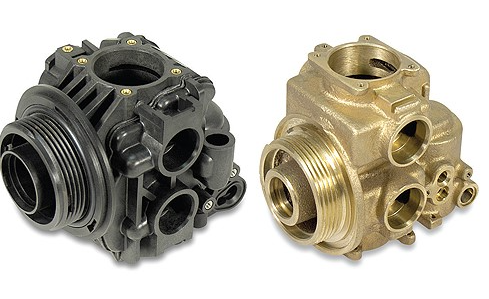DIC’s new DIC.PPS MP-6060 Black can be chemically etched with a general purpose solution such as chromic acid, allowing coated PPS to be produced on existing plastic coating production lines.
DIC Corp. of Japan, in collaboration with the companies Tsukada Riken Industry Co. Ltd. and Yoshino Denka Kogyo Inc., developed a plateable polyphenylene sulfide (PPS) compound.
The use of the newly developed DIC.PPS MP-6060 black compound in combination with coating technologies will enable mass production of electroless and galvanized PPS on existing plastic coating production lines, this without the need for a special engraving process, DIC said in a statement.
Plastic instead of metal for greater durability
Plateable PPS allows the use of plastic instead of metal for applications that require durability (including electronic device casings, connectors, and other components) and that provide protection against electromagnetic interference (EMI).
In the area of automotive components, vehicle electrification and autonomous driving are spurring greater use of plastics for electronic control units (ECUs) and advanced driver assistance systems (ADAS) housings, among other applications.
The goal is to reduce vehicle weight and therefore help improve both performance and sustainability by improving fuel efficiency and range.
Use in vehicle-mounted electronics
PPS, an advanced engineering plastic, is preferred for use in vehicle-mounted electronic components due to its durability, lightweight and processability.
It adapts to the incorporation of complex structures with ribs and cooling channels. While metals and other electroconductive materials have EMI shielding properties, plastics transmit these waves, requiring the deployment of shielding technology such as the formation of a thin layer of metal on the surface of the plastic used in cases. of the components.
Due to the superior chemical resistance of PPS, pretreatment with a stripping solution (the standard approach when coating with plastic) has not been feasible.
Another difficulty has been ensuring proper adhesion of the metal coating and the PPS substrate. Consequently, special etching processes (in particular blasting and etching with plasma, hydrofluoric acid and concentrated nitric acid) have been used to date to treat PPS and improve adhesion.
DIC’s new DIC.PPS MP-6060 Black can be chemically etched with a general-purpose solution such as chromic acid, allowing coated PPS to be produced on existing plastic coating production lines.

